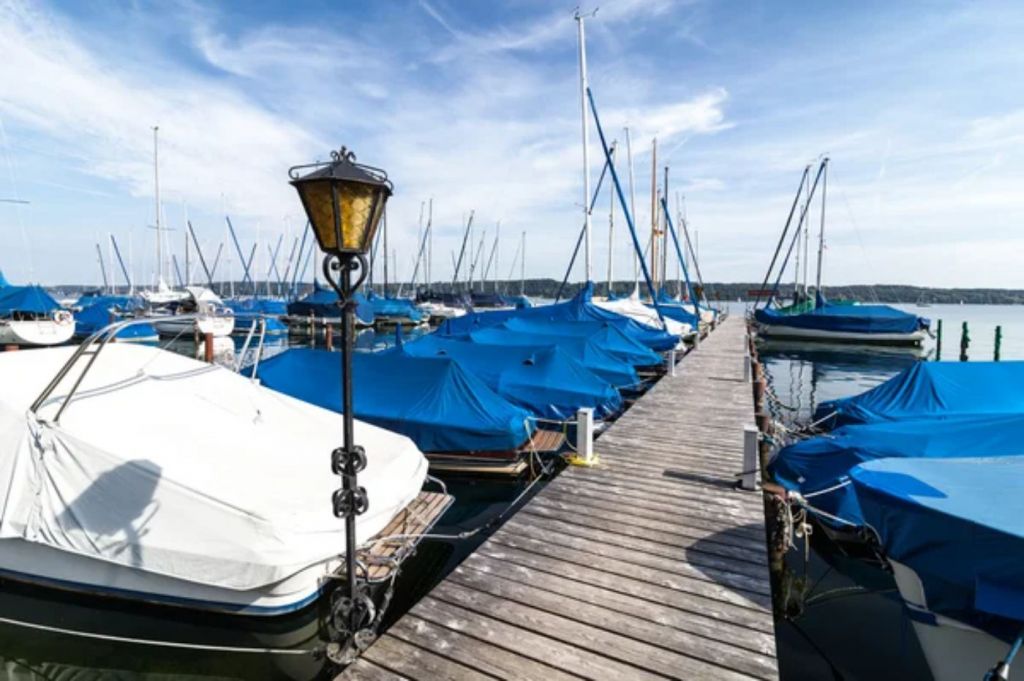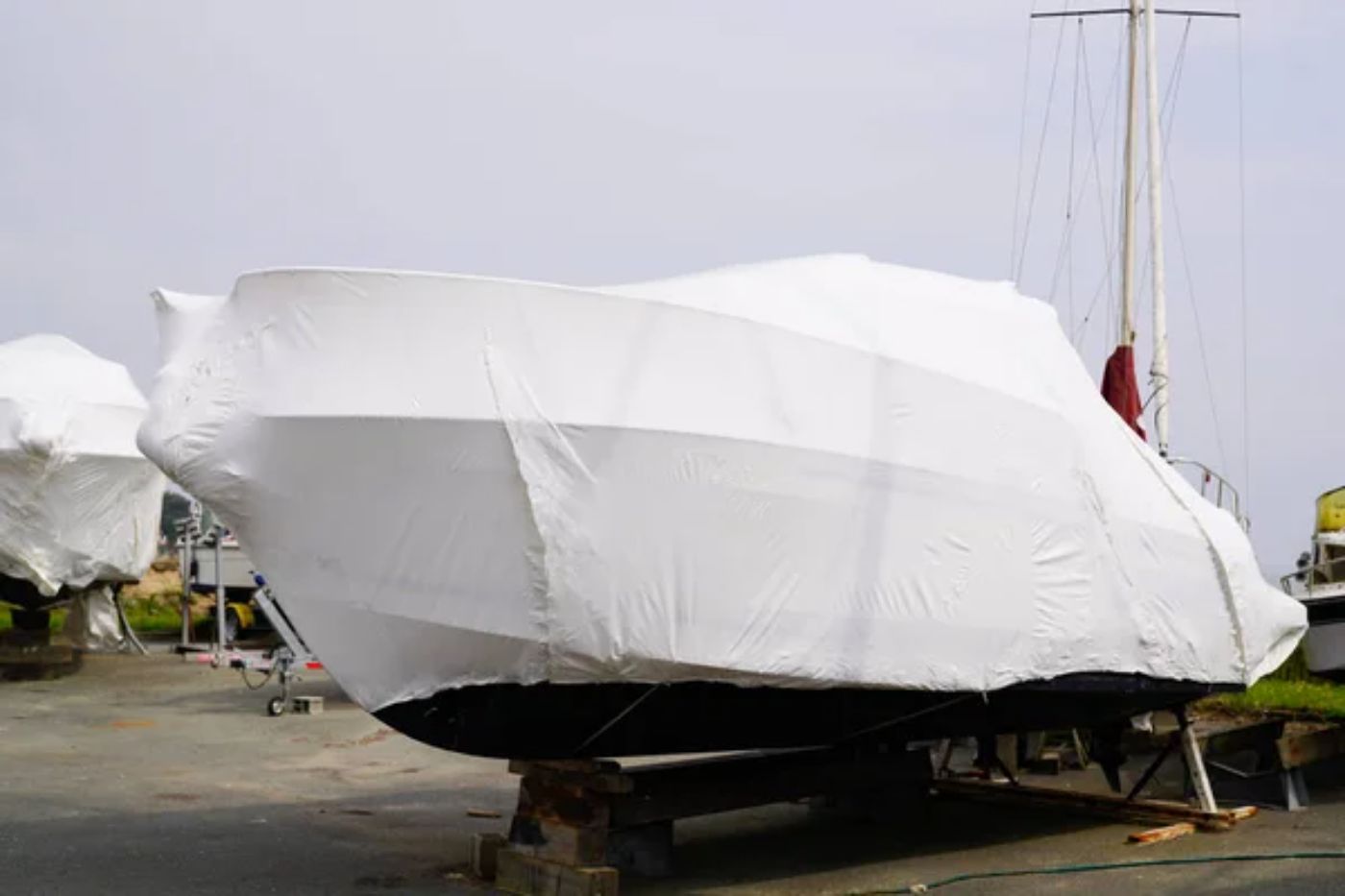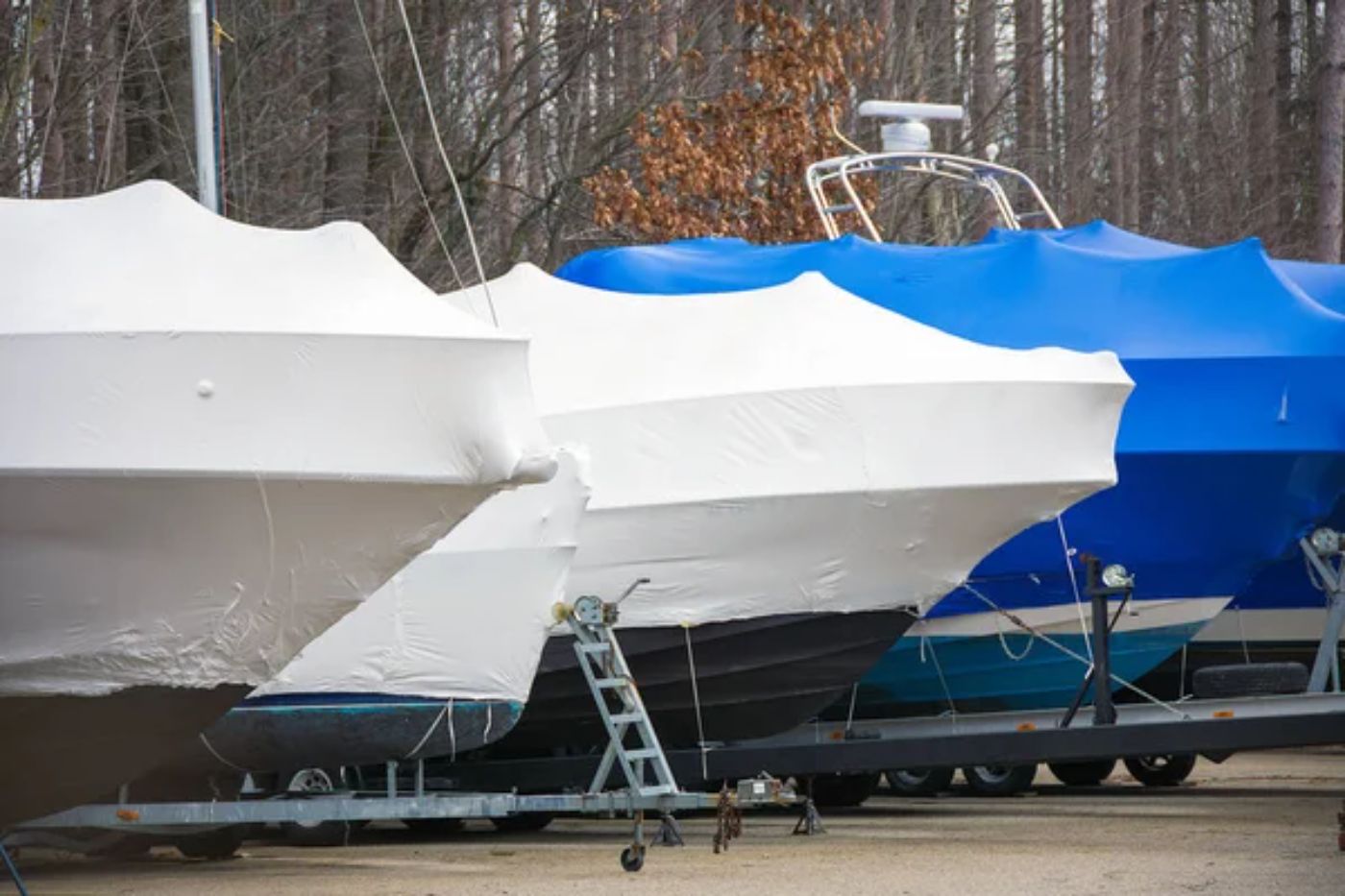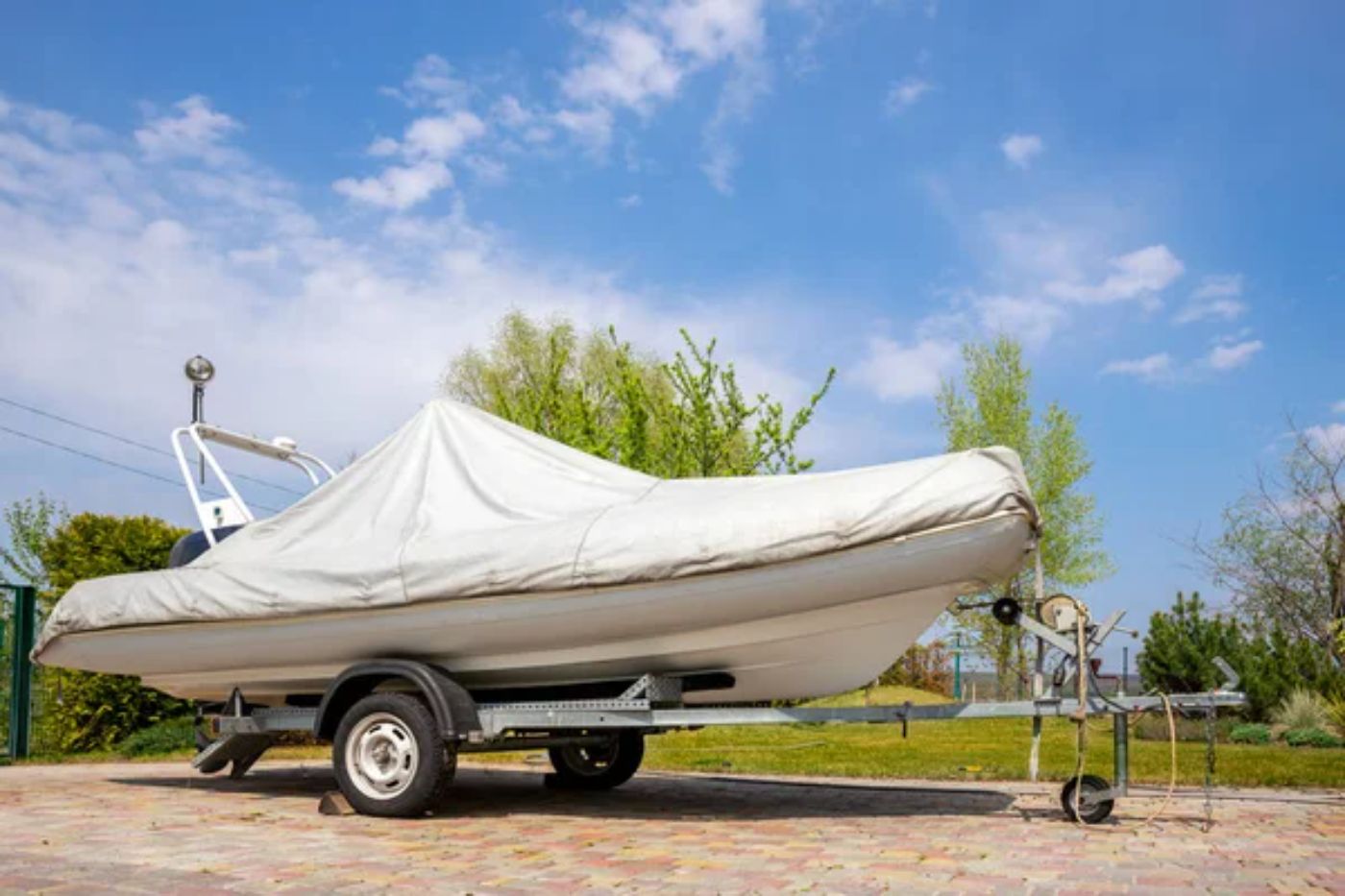Winter Boat Cover vs. Shrink Wrap & Tarp - What's Best?
Protecting your boat from snow, ice, and freezing temperatures, especially during the winter months, is an important part of every boater's journey. Now, there are different ways to safeguard your boat during the off-season, either by using winter boat covers, shrink wrap, or tarps. In this article, we'll take a look at the pros and cons of each and help you choose the best one for your boat depending on your needs.
Shrink wrap provides excellent protection against all elements, but it can be costly. A tarp is a more affordable option, but it can still allow moisture and pests to get inside your boat. Meanwhile, boat covers are easy to install, but they don't provide as much protection as the others.
The best winter covers are made of durable, waterproof, and breathable materials such as polyester or canvas. It should also fit your boat snugly, without any gaps or sagging. Let's look at other key features you should consider when choosing the best cover for your boat.
Summary
- The best winter cover would be a boat cover made of durable and waterproof materials with a snug fit, reinforcements, ventilation, and UV protection.
- Shrink wrap and tarps may cost less but are less durable, difficult to install, and do not offer the same level of protection as a well-fitted boat cover.
- When choosing a winter boat protection option, always consider factors such as durability, breathability, ease of installation, and cost.

On this page:
The Best Cover For Boat Winterization
The table below summarizes the characteristics and costs of different types of boat cover suited for winterization:
| Feature | Boat Winter Cover | Tarp | Shrink Wrap |
|---|---|---|---|
| Material | Heavy-duty fabric | Polyethylene | Polyethylene |
| Fit | Custom fit | Can be adjusted | Custom fit |
| Reinforcements | Yes | No | Yes |
| Ventilation | Yes | No | Optional |
| UV protection | Yes | No | Yes |
| Ease of use | Moderate | Easy | Difficult |
| Estimated costs | $200-$800 | $20-$200 | $10-$20 per foot |
Choose covers made of durable and waterproof materials
Polyester and canvas are two popular materials for winter covers because they are durable, waterproof, and breathable.
Polyester is a synthetic material that is lightweight and easy to handle, while canvas is a heavier, more traditional material that is known for its strength and durability.
A good winter cover should fit your boat snugly without any gaps or sagging
This prevents wind from getting underneath the cover and causing it to flap or tear. One of the most common mistakes boaters commit is using an ill-fitted cover during winterization.
To ensure a proper fit, you can measure your boat carefully and choose a cover that is designed to fit your boat's make and model.
Pick one with reinforcements
Look for covers that have reinforced areas in high-stress areas such as corners, seams, and tie-down points. This will help to prevent tears and wear and tear over time.
Reinforcements can be made of extra layers of material, or they can be reinforced with metal grommets or other hardware.
The best boat covers are breathable
A good winter cover should have vents or breathable panels to allow air to circulate and prevent moisture buildup. This is important because moisture can lead to mold and mildew, which can damage your boat's interior.
Vents can be located on the sides or top of the cover, and they can be covered with mesh or other breathable materials.
Find covers that have UV protection
If your boat will be stored outside during the winter, look for covers that offer UV protection to prevent fading and damage from the sun. UV protection can be provided by special coatings or treatments that are applied to the cover's surface.
Consider ease of use
The best winter covers should be easy to install and remove, with secure tie-downs or buckles that keep the cover in place. Look for covers that come with detailed instructions and all the necessary hardware for installation.
You can read more about a good boat cover and how to maintain it in this article.
Pros and Cons Of Winter Boat Covers
| Pros Of Using A Boat Cover | Cons Of Using A Boat Cover |
|---|---|
| Provides excellent protection against the elements | Can provide a home for rodents and pests |
| Relatively easy to install | Can trap moisture and lead to mold and mildew growth |
| Made from durable materials | Can be a hassle to put on and take off |
Boat covers are a popular choice for many boat owners looking to protect their boats from the elements. They come in a variety of materials, including canvas, polyester, and vinyl.
A custom cover is the best option as it will fit your boat perfectly, but a semi-custom cover can also provide good protection.

Meanwhile, a winter cover is specifically designed to protect your boat from harsh winter weather conditions. It is typically made from a heavy-duty material that can withstand snow, ice, and wind.
Below are some of the pros and cons of using a boat cover:
Pros of using a boat cover
-
Boat covers provide excellent protection against the elements, including sun, wind, rain, and snow. They can also protect your boat from dirt, dust, and debris.
-
Boat covers come in many different styles and designs, so you can choose one that provides easy access to your boat. For example, some covers have zippers or flaps that make it easy to get in and out of your boat.
-
They are relatively easy to install, and many come with tie-down straps or other fasteners that make it easy to secure the cover to your boat.
-
Some boat covers come with built-in ventilation systems that help prevent mold and mildew from forming under the cover.
-
High-quality boat covers are made from durable materials that can withstand the elements and last for many years.
Cons of using a boat cover
-
Boat covers can provide a cozy home for rodents and other pests, so you may need to check your boat regularly for signs of infestation.
-
If your boat cover doesn't have proper ventilation, it can trap moisture and lead to mold and mildew growth.
-
While boat covers are relatively easy to install, it can still be a hassle to put them on and take them off every time you want to use your boat.
Advantages And Disadvantages Of Shrink Wrap For Boats

The table below summarizes the advantages and disadvantages of using shrink wrap:
| Advantages Of Shrink Wrap | Disadvantages Of Shrink Wrap |
|---|---|
| Protects against snow and ice | Lack of breathability |
| Protects against rodents | Costly |
| Covers the entire boat |
Shrink wrapping involves wrapping the boat in plastic that is then heated to shrink tightly around the boat. This creates a tight and secure cover that protects the boat from the elements.
Installation of shrink wrap can be a bit more difficult than other options as it requires a special machine to heat and shrink the plastic, and access to the entire boat is needed to properly apply the wrap. However, many marinas and boatyards offer shrink-wrapping services for a fee.
Advantages of shrink wrap
It protects against snow and ice
The plastic material is slippery, which means that snow and ice won't accumulate on top of it as easily as they would on other types of covers. Additionally, framing can be set at a high angle to prevent ice and snow from building up.
It protects against rodents
The plastic material is not accessible to rodents, and it is difficult for them to chew through it. This means that you won't have to worry as much about rodents causing damage to your boat during the winter months.

It covers the entire boat
Shrink wrap covers the entire boat, which means that it provides complete protection from the elements. This is especially important if you plan on storing your boat outside during the winter months.
Disadvantages of shrink wrap
It is not breathable
One of the biggest disadvantages of shrink-wrapping your boat is that it is not breathable. If there is any moisture inside the boat at the time of wrapping, it will be trapped inside the wrap.
This can lead to mold and mildew growth, which can cause damage to your boat over time.
It can be expensive
Shrink wrapping can be more expensive than other types of covers. While it may be cheaper than a high-quality custom or semi-custom boat cover, you will need to pay for it every month.
The cost of shrink-wrapping a boat can vary depending on the size of the boat, and larger boats can cost more than $1,000 to shrink-wrap.
To save on the costs of materials, you can follow these cost-saving tips when winterizing a sailboat.
Benefits And Drawbacks Of Using Tarps For Boat Covering
Tarps are made of various materials, including canvas, polyethylene, and vinyl, and come in a range of sizes and thicknesses. They are also available in different colors, so you can choose one that matches your boat or your personal preference.
Below is a table that sums up the benefits and drawbacks of using a tarp as boat covering:
| Benefits Of Tarp | Drawbacks Of Tarp |
|---|---|
| Affordable and accessible | Not all tarps are durable |
| Comes in a variety of sizes | Improperly secured tarps can come loose |
| Can be easily tied down using grommets | May not provide enough protection against snow and ice buildup |
| Some tarps have reinforced edges to prevent tearing | May lead to moisture buildup and potential mold or mildew growth |
Benefits of using a tarp to cover your boat
It is affordable and accessible
One of the main advantages of using a tarp is that it is relatively inexpensive compared to other options like shrink wrap or custom covers.
You can find tarps at most hardware stores or online retailers, and they come in a variety of sizes to fit your boat. Some tarps even come with grommets, which make it easy to secure the tarp to your boat.
It can be easily tied down to your boat
Another benefit of using a tarp is that it can be easily tied down to your boat using the grommets on the corners. This ensures that the tarp stays in place during high winds or storms.
Drawbacks of using a tarp to cover your boat
Not all tarps are durable
Some tarps are made of flimsy material that tears easily, while others are thicker and more durable. If you're planning to use a tarp to cover your boat, always choose one that is made of high-quality material and has reinforced edges to prevent tearing.
Note also that since tarps may not be as durable as other cover options, they can easily chafe against your boat's surface, causing damage.

They may come loose if not properly secured
If the tarp is not secured properly, it can come loose in the wind and leave your boat exposed. You can use bungee cords or ropes to secure the tarp to your boat, but you need to make sure that the tarp is pulled tight and that there are no gaps where water or debris can get in.
They do not provide enough protection against snow and ice buildup
Tarps can easily sag under the weight of snow and ice, which can cause damage to your boat. Additionally, tarps may not be as waterproof as other cover options, which can lead to moisture buildup and potential mold or mildew growth.

The Complete Checklist for Winterizing Your Boat (Free PDF)
Did you find the answer to your specific question?
👍 0 👎 0




Leave a comment